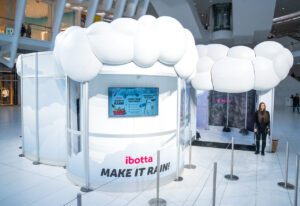Product Sampling is a proven way to get people to change their buying behavior. It is as relevant as ever and maybe even more so. Why? Well, we all know that one’s sampling experience can lead to buying a brand. But, perhaps equally important, in an age when peer recommendation often trumps “traditional marketing,” a positive sampling experience is something that people clearly will and do talk about. With all the new means people have to connect with brands and with others—our biology is still human and we humans do respond with innate curiosity to relevant, personal opportunities to try something new.
 There are classic and basic rules that every marketer should follow. For example, should your brand even be one that ‘samples’? If you believe a reasonable brand/product/service experience can be provided to people at a cost per converted person that makes sense—read on. Next clearly define you objectives—what would you, and your management, consider a ‘success’? Whom do you wish to have sample your brand, where, when, and how do you get them to have that experience? What metrics are you going to use to measure how you supported meeting your objectives?
There are classic and basic rules that every marketer should follow. For example, should your brand even be one that ‘samples’? If you believe a reasonable brand/product/service experience can be provided to people at a cost per converted person that makes sense—read on. Next clearly define you objectives—what would you, and your management, consider a ‘success’? Whom do you wish to have sample your brand, where, when, and how do you get them to have that experience? What metrics are you going to use to measure how you supported meeting your objectives?
In addition, as marketing times change fast, new rules have also emerged:
Reach People Wherever you Wish them to Experience your Brand (at home, in a store, on a cruise, at a specific event, etc.) is no longer the challenge it used to be. If you can imagine it, you can place your brand there.
Hybrid isn’t Only an Automotive Term Brands are ever more frequently moving to execute sampling programs across multiple channels, both off and on- line. Using consistent creative, messaging and materials across multiple touchpoints enables ‘scale’ savings while maintaining flexibility in how brands use their sample inventory.
Shopper Marketing plus Sampling Brands speak to retailers’ shoppers /potential shoppers and help drive people into stores using samples as a motivator that spurs action. The person who tries the sample wins by trying something new to them; the brand wins by converting a trier to a buyer; and the retailer wins not only because the person buys, but also because people really recognize and appreciate what the retailer has done for them.
Wishing for More Samples As the true social power of sampling continues to be demonstrated, be sure you plan to create more samples than you think you will need. A larger pool of samples allows you to take full advantage of new options as they appear. Just look at one tactic, digital sampling, and you’ll see many interesting new options: on brands’ own sites, (Kleenex); Facebook (Seattle’s Best); and YouTube (Miracle Whip) to name but a few. New viable sampling opportunities are being created all the time. The world of marketing is moving fast—don’t be caught short.
Update Older ROI Models to account for positive word of mouth. Recent evidence from testing done for the USPS Sample Showcase product suggested at least a 5X factor at play, meaning for each sample distributed five additional people on average heard about the brand. Samples are not only trial vehicles they are also a trigger for conversation.
Never Stop at a Single Consumer Touchpoint Think longer term and use your sampling efforts as one powerful tool to create advocates and insure any sampling effort continues to pay back long after the initial trial purchase has occurred.
Talk to your Friends. Talk to your Peers. The fact that “everyone loves a sample” is a simple truth.
Marketers today can execute effectively across many more touchpoints, with greater control, more transparency into results, better costs per converted consumer and higher quality than ever before.
Larry Burns in the chief executive officer of Start Sampling. He can be reached at lburns@startsampling.com.


 Network
Network

